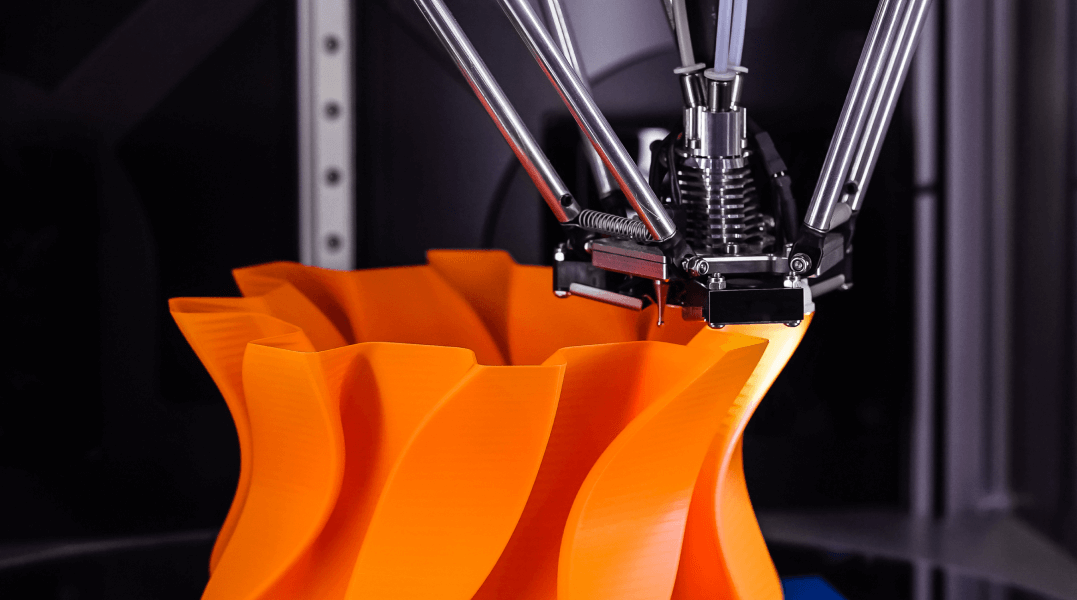
Revolutionizing Manufacturing: The Emergence of Advanced Technologies in Additive Manufacturing
Share

In the race to innovate and maintain a competitive edge, industries are embracing flexible, responsive, and sustainable production methods. One standout technology leading this revolution is additive manufacturing, widely known as 3D printing. Initially lauded for its ability to create complex structures and reduce material waste, additive manufacturing has evolved into a strategic enabler of industrial transformation.
This blog delves into how advanced technologies—nano-scale 3D printing, 4D printing, artificial intelligence (AI), and bioprinting—are redefining additive manufacturing and unlocking groundbreaking opportunities across industries.
Key Innovations Driving Additive Manufacturing
1. Nano-Scale 3D Printing
The pursuit of precision has driven the development of nano-scale 3D printing, enabling the creation of structures as small as a fraction of a human hair’s width.
· Innovative Materials: Stanford University developed composite materials incorporating metal nanoclusters to produce strong yet lightweight lattices.
· Advanced Techniques: Methods like Arizona State University's Multiphase Direct Ink Writing are enabling quick and accurate nano-scale manufacturing.
Impact:
Nano-scale 3D printing is revolutionizing microelectronics, biomedical engineering, and aerospace by enabling the production of lightweight components, intricate implants, and advanced drug delivery systems.
2. 4D Printing
Building on the foundation of 3D printing, 4D printing introduces materials that alter their shape or properties in response to external stimuli such as temperature or moisture.
· Space Applications: Collaboration between Zortrax and the European Space Agency has yielded lightweight, deployable structures for satellites and sensors.
Impact:
4D printing holds the potential to redefine design strategies in aerospace, automotive, and textiles by creating self-adjusting, durable components that respond dynamically to environmental conditions.
3. Artificial Intelligence (AI)
AI integration in additive manufacturing is transforming the entire production process, from design to execution.
· Advanced Software: AiBuild’s AI-powered platform enables full automation and predictive analytics, significantly enhancing efficiency and reducing defects.
· Partnerships: Collaborations like AiBuild and WASP integrate digital twin technologies to further improve precision and quality.
Impact:
AI-powered additive manufacturing accelerates production cycles, reduces costs, and ensures superior product quality, catering to the demands of high-precision industries.
4. Bioprinting
The groundbreaking field of bioprinting uses 3D printing techniques to create tissue structures from cells and biological materials.
· Organ Transplants: ARPA-H’s PRINT program aims to create custom, immune-matched organs, addressing the shortage of donor organs and eliminating the need for immunosuppressive treatments.
Impact:
Bioprinting is set to revolutionize healthcare by enabling personalized medicine, advancing drug development, and reducing transplant waiting times.
Applications Across Key Industries
· Electronics and Medical Devices: Nano-scale 3D printing is enabling intricate designs in wearable tech, telecommunications, and minimally invasive surgical tools.
· Aerospace and Automotive: 4D printing materials offer lightweight, adaptive solutions for durable components.
· Healthcare: Bioprinting advances personalized treatment options, including organ creation and drug testing.
· Consumer Goods: AI enhances production efficiency, reducing waste and costs while meeting evolving consumer demands.
Future Outlook: The Strategic Edge of Additive Manufacturing
As additive manufacturing integrates technologies like AI and IoT, its potential to reshape industries is boundless.
· On-Demand Production: Companies are moving toward just-in-time inventory models to optimize logistics and reduce warehousing costs.
· Sustainability: Additive manufacturing aligns with environmental goals by minimizing material waste and energy consumption.
· Customization and Innovation: From architectural breakthroughs to personalized medicine, industries are leveraging this technology for tailored solutions.
Investor Opportunity:
The additive manufacturing market is poised for exponential growth as industries across aerospace, healthcare, and consumer goods adopt these advancements. By investing in companies driving innovation in 3D printing, investors can tap into a future of sustainable, efficient, and smart manufacturing.
Conclusion: The Future is Additive
Advanced technologies in additive manufacturing are paving the way for a new era of industrial innovation. By harnessing nano-scale 3D printing, 4D printing, AI, and bioprinting, businesses can achieve unparalleled efficiency, adaptability, and creativity.
For investors, this is more than a technological shift—it’s a strategic opportunity to invest in the future of manufacturing. Embrace the revolution and shape tomorrow’s industries today.